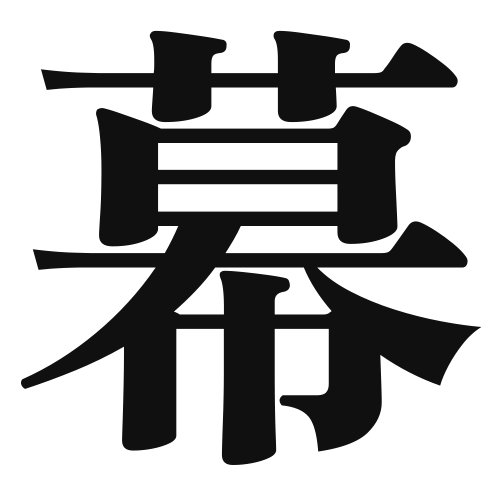1. Overview of Meaning
The kanji “幕” (maku) primarily means “curtain” or “screen.” It is often used to refer to a physical curtain, such as those used in theaters, as well as metaphorically to describe something that conceals or separates.
2. Formation and Radical
Formation of the Kanji: The kanji “幕” is a compound character (会意文字) that combines elements to convey its meaning. It consists of the radical “巾” (kin), which means “cloth,” and the character “莫” (baku), which historically relates to darkness or obscurity.
Radical: The radical of “幕” is “巾,” indicating its connection to fabric or cloth.
3. Examples of Usage
Common Words and Phrases: Some frequently used words that include “幕” are:
- 幕府 (bakufu) – shogunate
- 幕間 (makuma) – intermission
Example Sentences in Daily Conversation:
- 「劇場の幕が上がると、観客は静かになった。」(When the curtain of the theater rises, the audience becomes quiet.)
- 「この映画は幕間に休憩があります。」(This movie has a break during the intermission.)
4. Synonyms and Antonyms
Similar Kanji: A similar kanji is “帷” (tobari), which also means “curtain” but is often used in a more poetic or literary context.
Antonyms: An antonym could be “開” (kai), meaning “open,” as it represents the opposite action of what a curtain does when it is drawn.
5. Cultural and Historical Background
Connection to Japanese Culture: In Japanese culture, “幕” is significant in traditional theater, such as Noh and Kabuki, where curtains play a crucial role in the performance. The term “幕府” (bakufu) refers to the historical military government, highlighting the importance of the term in Japan’s political history.
Proverbs and Idioms: One common idiom is “幕を下ろす” (maku o orosu), which means “to bring something to an end,” often used in the context of concluding a performance or event.
